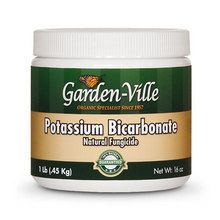Formula KHCO3 Density 2.17 g/cm³ Appearance white crystals | Molar mass 100.115 g/mol Soluble in Water | |
 | ||
Related compounds IUPAC ID potassium hydrogen carbonate | ||
Potassium bicarbonate
Potassium bicarbonate (also known as potassium hydrogen carbonate or potassium acid carbonate) is a colorless, odorless, slightly basic, salty substance. According to the U.S. Food and Drug Administration (FDA), potassium bicarbonate is "generally recognized as safe". There is no evidence of human carcinogenicity, no adverse effects of overexposure, and an undetermined LD50. It is among the food additives encoded by European Union, identified by the E number E501. Physically, potassium bicarbonate occurs as a crystal or a soft white granular powder. Potassium bicarbonate is very rarely found in its natural form, the mineral called kalicinite.
Contents
Chemistry
Decomposition of the bicarbonate occurs between 100 and 120 °C (212 and 248 °F):
2 KHCO3 → K2CO3 + CO2 + H2OIt is manufactured by reversing the above: reaction of potassium carbonate with carbon dioxide and water:
K2CO3 + CO2 + H2O → 2 KHCO3Uses
The compound is used as a source of carbon dioxide for leavening in baking, extinguishing fire in dry chemical fire extinguishers, acting as a reagent, and a strong buffering agent in medications.
It is used as an additive in winemaking and as a base in foods and to regulate pH. It is a common ingredient in club soda, where it is used to soften the effect of effervescence.
Potassium bicarbonate is used as a fire suppression agent ("BC dry chemical") in some dry chemical fire extinguishers, as the principal component of the Purple-K dry chemical, and in some applications of condensed aerosol fire suppression. It is the only dry chemical fire suppression agent recognized by the U.S. National Fire Protection Association for firefighting at airport crash rescue sites. It is about twice as effective in fire suppression as sodium bicarbonate.
Potassium bicarbonate is an effective fungicide against powdery mildew and apple scab, allowed for use in organic farming.
Potassium bicarbonate is often found added to bottled water to affect taste.
Potassium bicarbonate has widespread use in crops, especially for neutralizing acidic soil.
History
The word saleratus, from Latin sal æratus meaning "aerated salt", was widely used in the 19th century for both potassium bicarbonate and sodium bicarbonate. The term has now fallen out of common usage.
